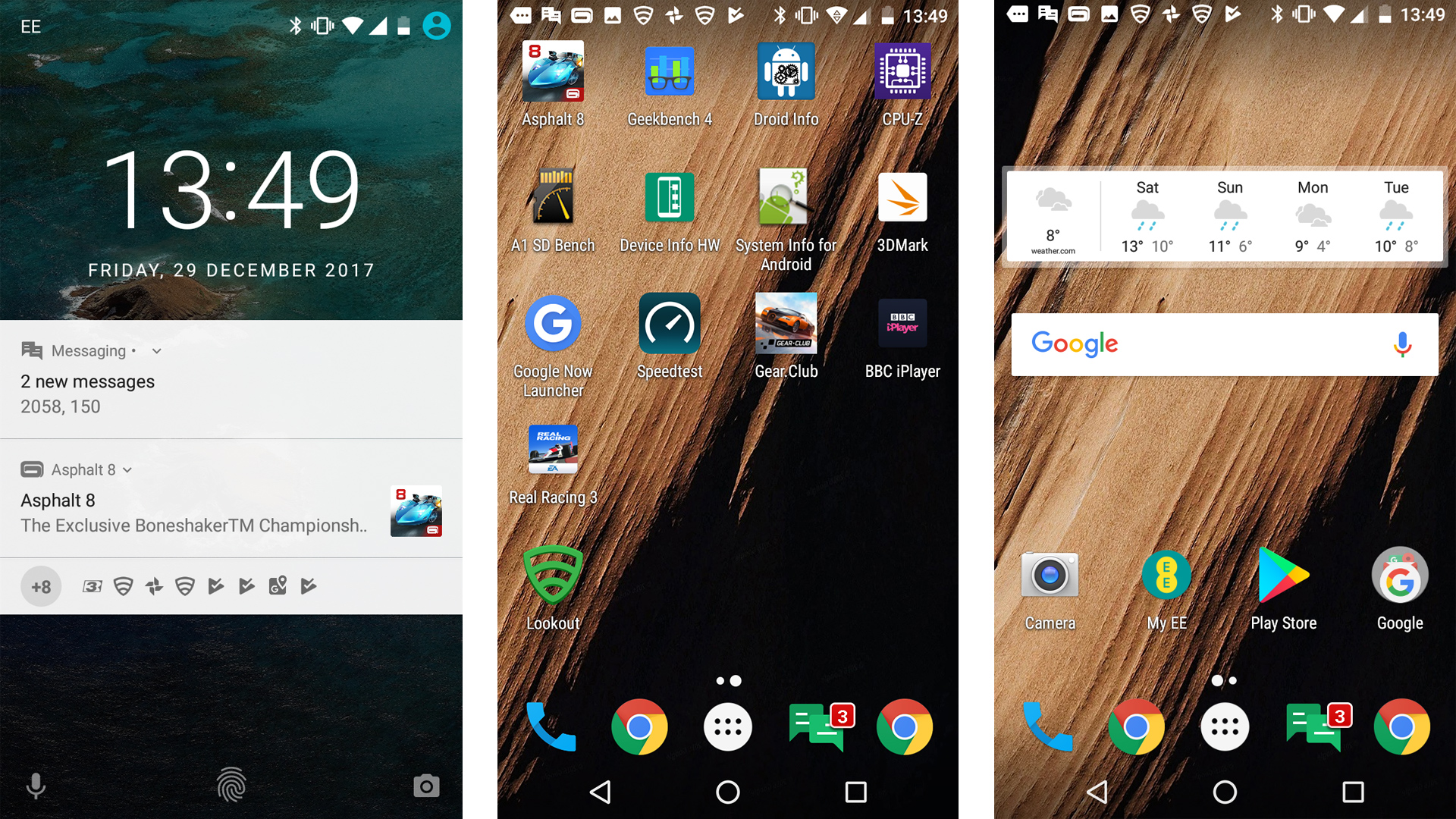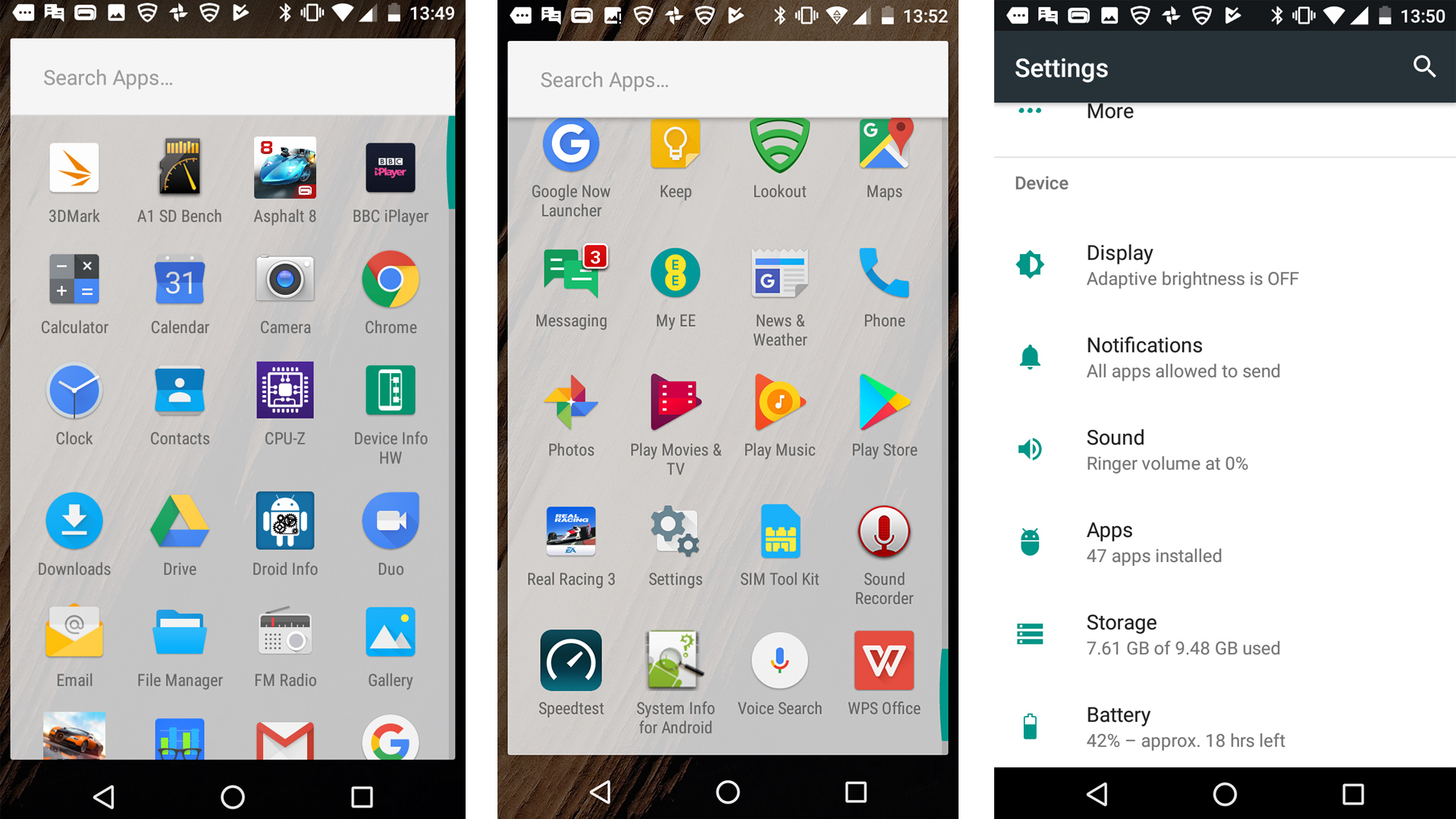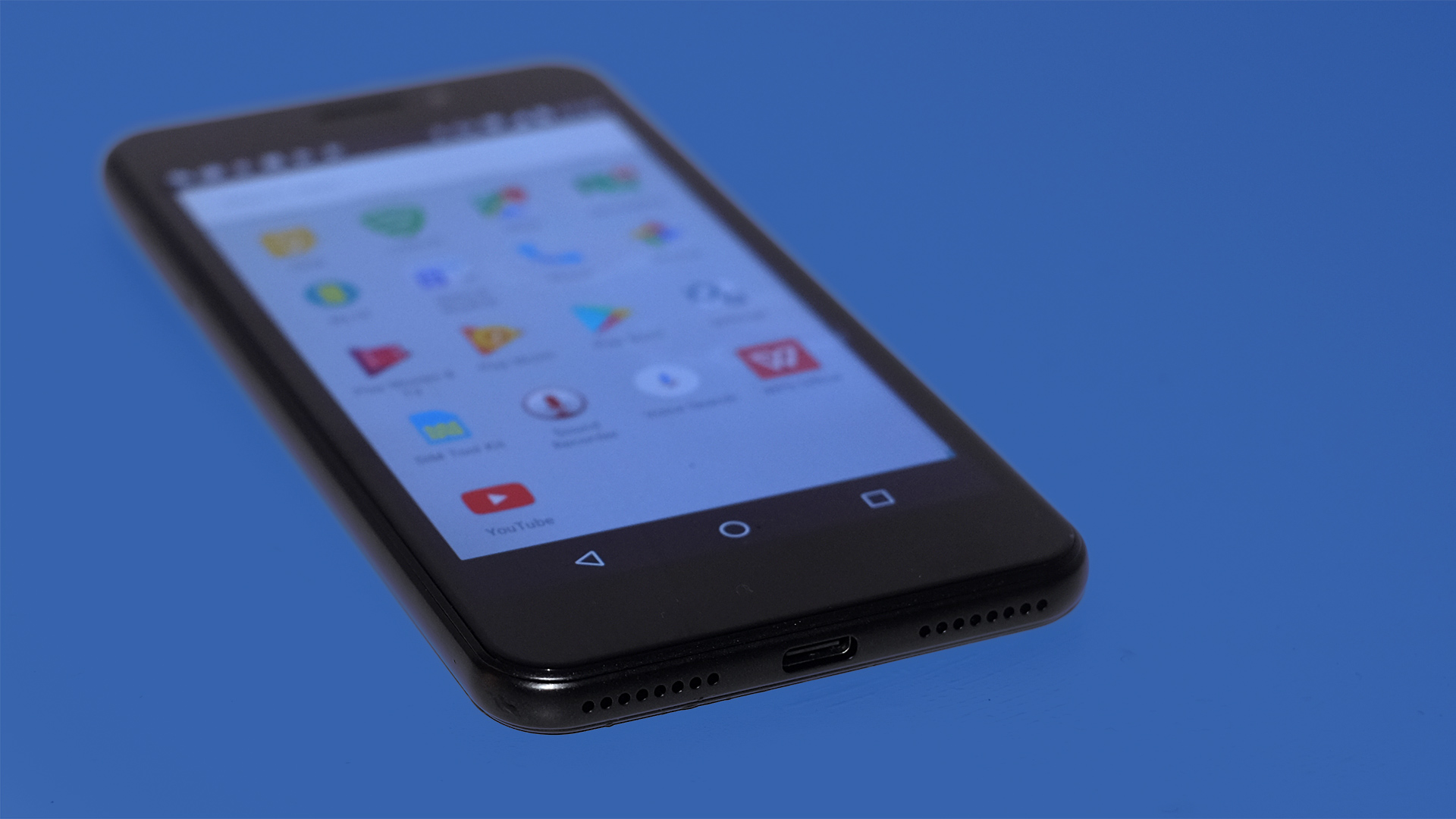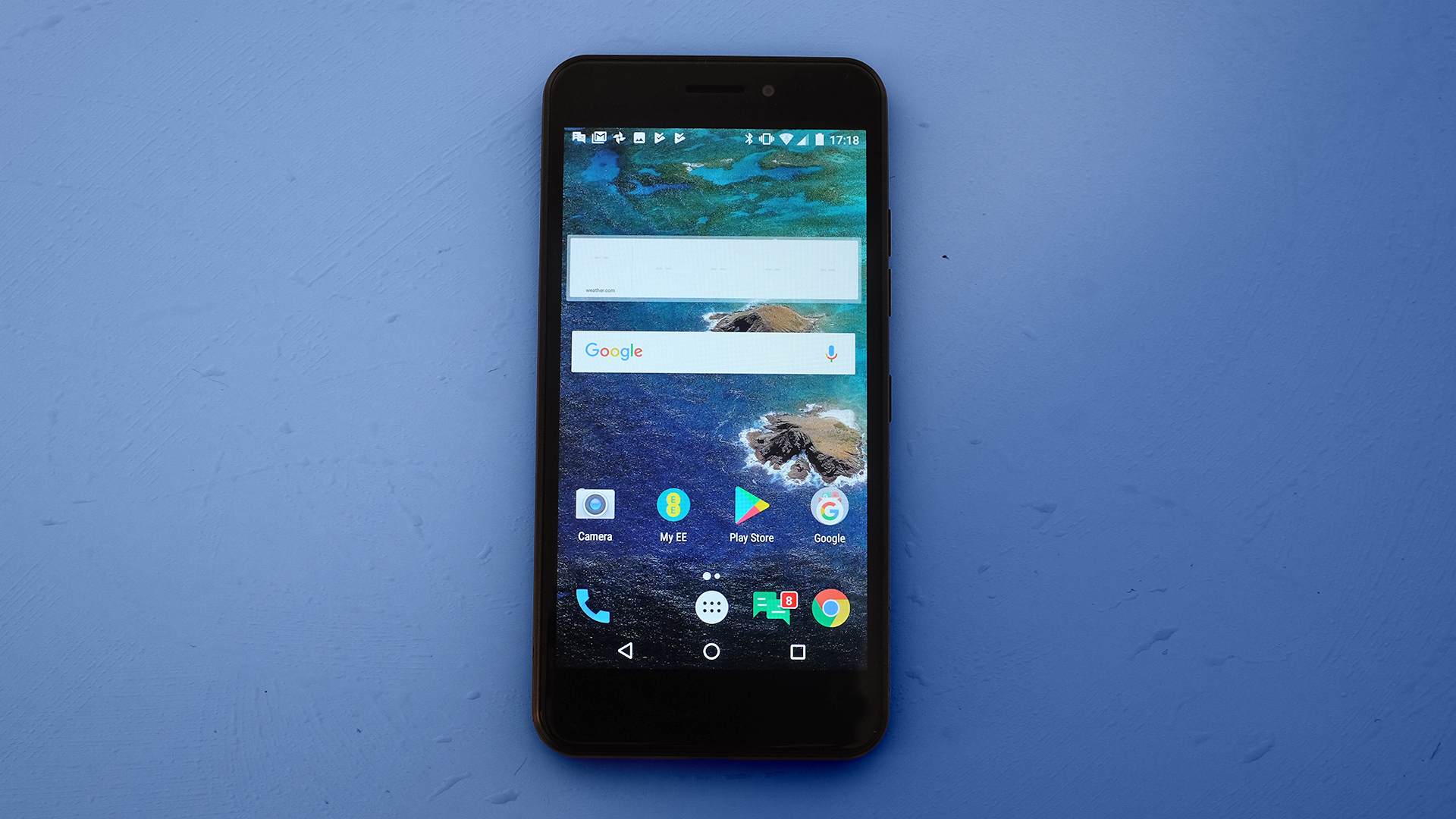Why you can trust TechRadar
Interface and reliability
- Android Nougat with the light Launcher3 UI
- Minimal bloat
- Fair performance
The EE Hawk runs Android Nougat. And while you might assume it's vanilla Android from a quick glance, it actually isn't. This is Launcher3, a light custom interface.
It's simple, and feels a lot like a slightly older version of vanilla Android. There' still an apps menu button, unlike the gesture-based Google Pixel 2, but the apps menu scrolls vertically as usual and the icon style is classic Android.
The EE Hawk misses out on a few (semi) important features of Android 7, though. For example, in other phones with this version of Android you can long-press icons to bring up shortcuts that take you right to specific parts of the app. You don't get those here.

There are collapsible notifications, though, and minimal bloat. An EE app that lets you check and top-up your account is pre-installed, as is Lookout security.
Despite there seemingly not being much bloat though you only actually get around 7-8GB out of the 16GB on board to install your own apps.
Initially we found apps a little slow to load, but after the necessary data is cached for your favourite apps the EE Hawk starts feeling like a reasonably slick Android phone.

There's no annoying wait for the phone to catch up with you as you type an address into, say, the Chrome browser, or any strange pauses as you move between the apps menu and the home screen.
However, this is a phone that needs to bed in a little. For the first six hours or so there were a few concerning pauses.
In the following days the EE Hawk seemed to get up to speed, likely due to optimisation of resources cached in the phone's RAM.
Movies, music and gaming
- Reasonable bottom-firing speaker
- 16GB of storage
- Fine for high-end gaming
The phone also has zero problem with high-end games. While its core hardware is entry-level, the relatively low 720p screen resolution puts much less strain on the graphics processor.
Titles like Asphalt 8 and Gear.Club run well, with generally high frame rates and only the occasional stutter or noticeable frame rate drop.
There's a single speaker on the bottom edge, so you don't get stereo sound. This is a generally clean and clear-sounding speaker with fair volume. However, it doesn't have the bulk or power of the best.

For movie watching, you'll want to use some headphones. There are also no dedicated video apps beyond the basic system-level player and Google Play Movies, which lets you rent titles from Google's own library.
Media hoarders, rather than streamers, will want to buy a microSD card, as the 16GB of internal storage only leaves room for a few films.
Performance and benchmarks
- Entry-level octa-core CPU
- 2GB of RAM
- Performance is about right for the price
The EE Hawk has a MediaTek MT6750 chipset. This is a low-end chipset, but not a true bottom-grade one. It has eight cores, all of the Corex-A53 type. Four are clocked at 1GHz for everyday use, and four are at up to 1.5GHz. They kick in when more power is required.
These are paired with a dual-core Mali-T860 graphics chipset. This same graphics processor has caused some significant performance issues in 1080p phones, but it seems easily powerful enough to keep a 720p phone happy.
In Geekbench 4 the EE Hawk scores 2,560 points. This places it much closer to something like the Snapdragon 430 of the Moto G5 than the Snapdragon 625 of the Moto G5 Plus and other affordable phones.
Raw performance is about right for the price.
4G speed is another boasting point of the Hawk, and EE says it has made its mobile internet rev up to 238Mbps at its super-speedy 4G site in Wembley. The phone has CAT 6 LTE, capable of speeds of up to 300Mbps.
In regular old London using a normal EE SIM, the 4G speed tends to sit around 30Mbps: nothing special, but the phone is ready for when the UK is completely covered by ultra-fast 4G in, ooh, 10 years.
Current page: Anything else I should know?
Prev Page Battery life and camera Next Page Verdict and competitionAndrew is a freelance journalist and has been writing and editing for some of the UK's top tech and lifestyle publications including TrustedReviews, Stuff, T3, TechRadar, Lifehacker and others.

